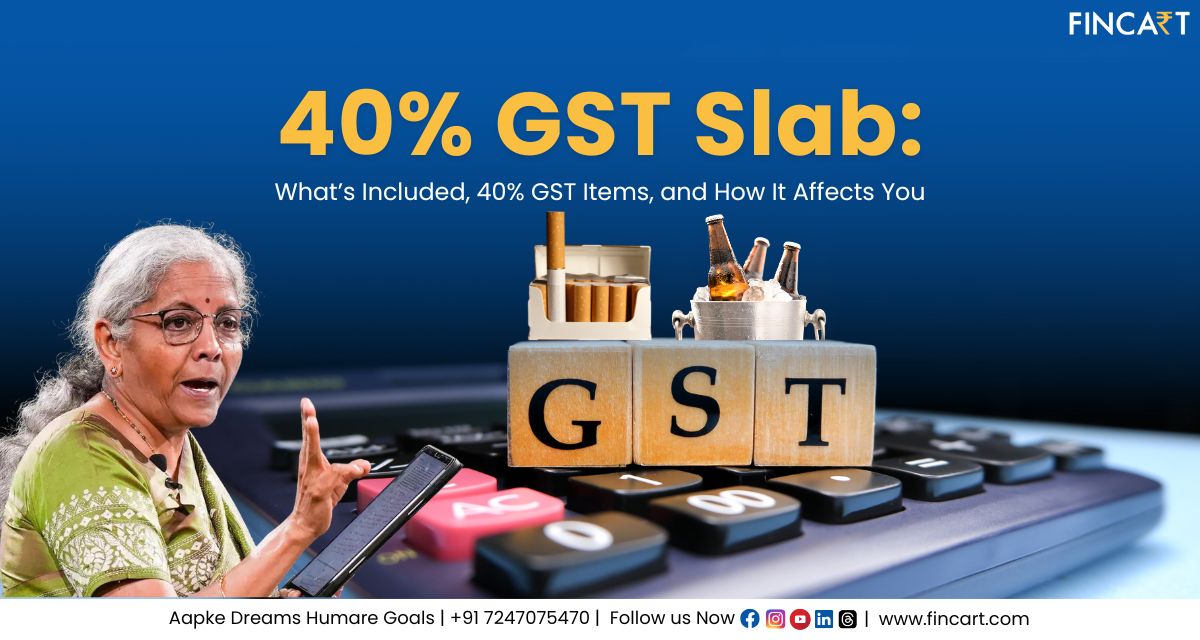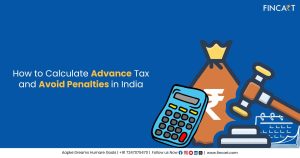India’s Goods and Services Tax (GST) system has entered a new era with the rollout of GST 2.0 in September 2025. One of the most significant changes under this reform is the introduction of the 40% GST slab – a single, consolidated tax rate applicable to luxury and “sin” goods that were previously taxed at 28% plus compensation cess.
This bold step simplifies the GST structure, removes multiple layers of cess, and makes compliance much more transparent for businesses and consumers alike. The 40% GST slab is now the highest GST rate in India and applies to a very specific set of goods and services. If you’ve been searching for clarity on 40% GST items, the complete 40% GST list, and what this means for your purchases and business decisions, this article covers it all in detail.
| Category | Items / Services Covered | Earlier Tax Structure | What’s New |
| Tobacco & Related Products | Cigarettes, cigars, cheroots, cigarillos, pan masala, gutkha, reconstituted tobacco | 28% + compensation cess | Unified flat 40% GST |
| Sugary & Carbonated Beverages | Aerated drinks, carbonated fruit beverages, caffeinated/energy drinks | 18–28% + cess | Now taxed at 40% GST on transaction value |
| Luxury Motorcycles | Motorcycles with engine capacity above 350 cc | 28% + cess | Moved to 40% GST slab |
| Gaming & Betting Services | Casinos, online gaming, betting, horse racing, lottery, race club services | 28% + cess | Taxed at 40% GST on total face value |
| Luxury Goods & Services | Yachts, private jets, pleasure/sports vessels | 28% + cess | Shifted to 40% GST |
| Weapons & Accessories | Pistols, revolvers, smoking pipes, cigarette holders | High rate earlier | Standardized under 40% GST list |
What the 40% GST Slab Means (Financially & Policy-wise)
Understanding what this change implies helps both consumers and businesses plan ahead.
- Cost Increase for Certain Goods & Services
For all the 40% GST items/services listed above (excluding cars), prices will go up because GST incidence increases. Some of these products already had cess, but the shift to a straight 40% gst on them may mean simpler but probably higher effective tax burden. - Simplification & Uniformity
One of the goals is to simplify the taxation system. Instead of multiple cesses + 28% + extra slabs, these goods/services will have a clear 40% rate. That improves transparency. - Revenue from “Sin / Luxury” Goods
The government expects such items to contribute a stable high-margin revenue stream. Sin goods are often less price sensitive (to a point), so higher taxes are feasible. - Behavioral / Public Health Considerations
For items like tobacco, pan masala, sugary/caffeinated beverages, higher tax also serves a disincentive / deterrent role (less consumption, health externalities). - Impact on “Premium” Purchases
Luxury firearms, yachts, private aircraft—these are niche, but for buyers in those brackets, cost increases might affect decision timing, imports, usage.
Important Details, Exceptions & Clarifications
To resolve doubts regarding the 40% gst slab, here are key clarifications.
- Effective Date
All these 40% gst items (except some tobacco/gutkha/tobacco-related items) kick in from 22nd September 2025. - Still Some Cess or Transitional Issues
- Some items like tobacco and gutkha might still have compensation cess / previous tax elements until all dues (compensation cess / GST compensation loan) are cleared.
- Notifications may clarify exactly how input tax credit (ITC) works in these cases.
- Some items like tobacco and gutkha might still have compensation cess / previous tax elements until all dues (compensation cess / GST compensation loan) are cleared.
- What’s Not in the 40% GST Slab
Small cars (within a certain size, engine capacity) have been moved down to 18%. Only “luxury / large” vehicles are affected by 40%.
Household staples, medicines, food, etc., are not in 40% (mostly 0%, 5% or 18%) unless they are part of the “luxury/sin” category. - Price Impact vs. Base Price + Retail Margin
GST is applied on the transaction value or retail price (as per GST law) not just on ex-factory value. For sin goods under 40% gst items, this means the tax burden might be higher than what many expect, because the entire value up to retail gets taxed. - State vs Centre Share (CGST/SGST/IGST)
Though the rate is 40% GST, it is split between Central GST (CGST) and State GST (SGST) for intrastate supplies, or IGST if interstate. Buyers may sometimes see “GST 40%” but behind the scenes it’s split. - Effect on Businesses
- Businesses dealing with 40% gst items need to adjust pricing, margins, inventory valuation, supply chain costs.
- Larger tax liability means cashflow effects: working capital needs may increase.
- There might be compliance costs: ensuring correct classification, paying GST on correct value, dealing with ITC, etc.
- Businesses dealing with 40% gst items need to adjust pricing, margins, inventory valuation, supply chain costs.
Implementation / Notifications
All these changes are subject to formal notifications and may include clarifications, thresholds, and possibly some exemptions or specific HSN codes. It’s important for manufacturers/traders/importers to check the latest CBIC/State GST department notifications.
Examples: How Much Will Prices Change?
To make the change tangible, here are some hypothetical examples to help you see the impact:
| Item | Old Rate + Cess (approx.) | New GST Rate | Approx. Increase in GST Portion* |
| A bottle of sugary aerated drink | ~28% + cess (say total ≈30-35%) | 40% | +5-10 percentage points higher tax on same base price |
| Premium motorcycle (>350cc) | ~28% + cess | 40% | Not insignificant – depending on vehicle cost, could add thousands of rupees in GST component |
| Casino admission / large scale sports event ticket | ~28% | 40% | If ticket price was ₹1000, GST portion goes from ₹280 → ₹400 on taxable value |
*These are illustrative; actual increase depends on base price, whether cess was there earlier, input tax credit etc.
Who Wins, Who Loses
Winners:
- Consumers of everyday items (food, hygiene, essential goods) will benefit because many of these have been moved to lower rates (5% / 0%).
- Businesses in mass-market / FMCG or low/mid-tier segments may get demand boost, simpler compliance.
- States and Central govt may see more stable revenue from sin/luxury goods, helping balance books.
Losers:
- Consumers of 40% gst items- “sin” goods: tobacco, pan masala, sugary drinks, premium beverages etc. will face higher GST.
- Businesses involved in manufacturing & retail of such goods will have to adjust their margins, possibly reduce consumption.
- Niche segments (yachts, private aircraft, weapons) will see higher tax burdens.
Implications for Stakeholders
- Consumers should review purchases of items that now attract 40% GST — especially non-essentials, sugary/caffeinated beverages, tobacco products, premium goods. Budget accordingly.
- Retailers / Manufacturers / Importers need to reclassify products, update billing systems, adjust margins, evaluate demand changes. Inventory bought before 22 Sept may have older tax treatment; those purchased/produced after must use new rates.
- Government / Policy Makers will have to monitor for unintended consequences: smuggling, illicit trade (e.g. for high tax items), inflation spillover, fairness of luxury/sin classification.
- Investors & Businesses in sectors affected (beverages, tobacco, gaming, premium goods) need to factor in lower demand or higher compliance cost. Conversely, sectors benefiting from reduced GST (consumer staples, appliances etc.) may see growth.
Conclusion
The introduction of the 40% GST slab under GST 2.0 marks a significant shift in India’s indirect tax regime. It sharpens the fiscal distinction between necessities and luxury/sin goods, ensuring essentials become more affordable while 40% gst items ( “sin / high-end” items)contribute more tax. For consumers, the impact will be felt mostly in beverages, tobacco, premium services, and luxury goods. For businesses, it’s time to adapt to the new classifications, update systems, and plan for the cash‐flow and pricing implications.




